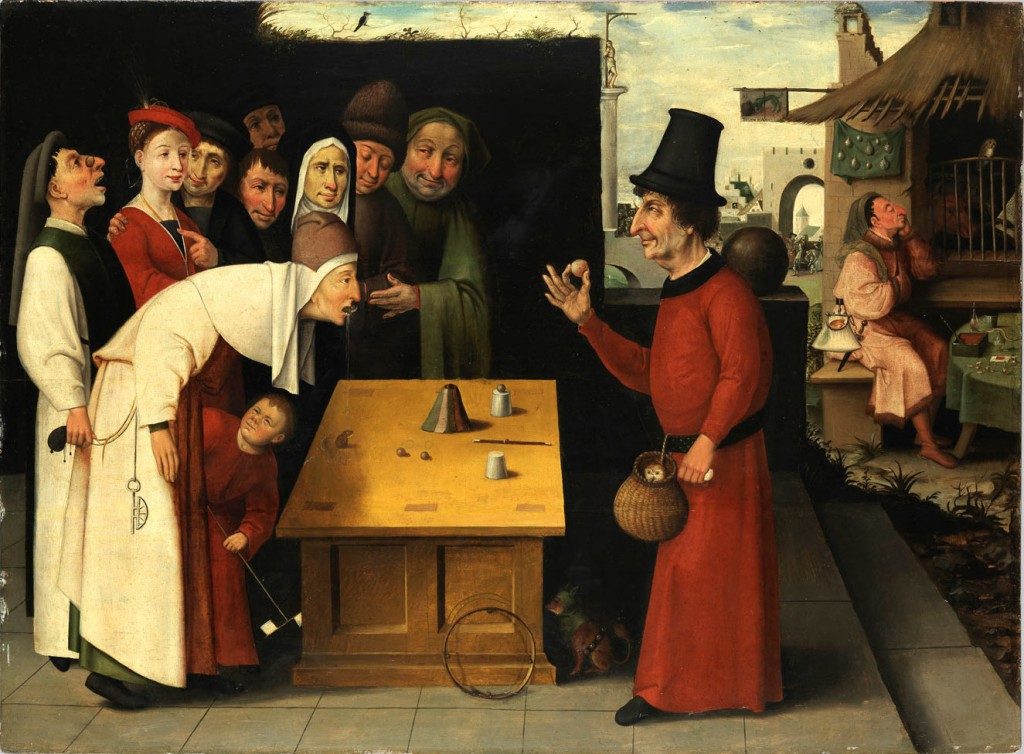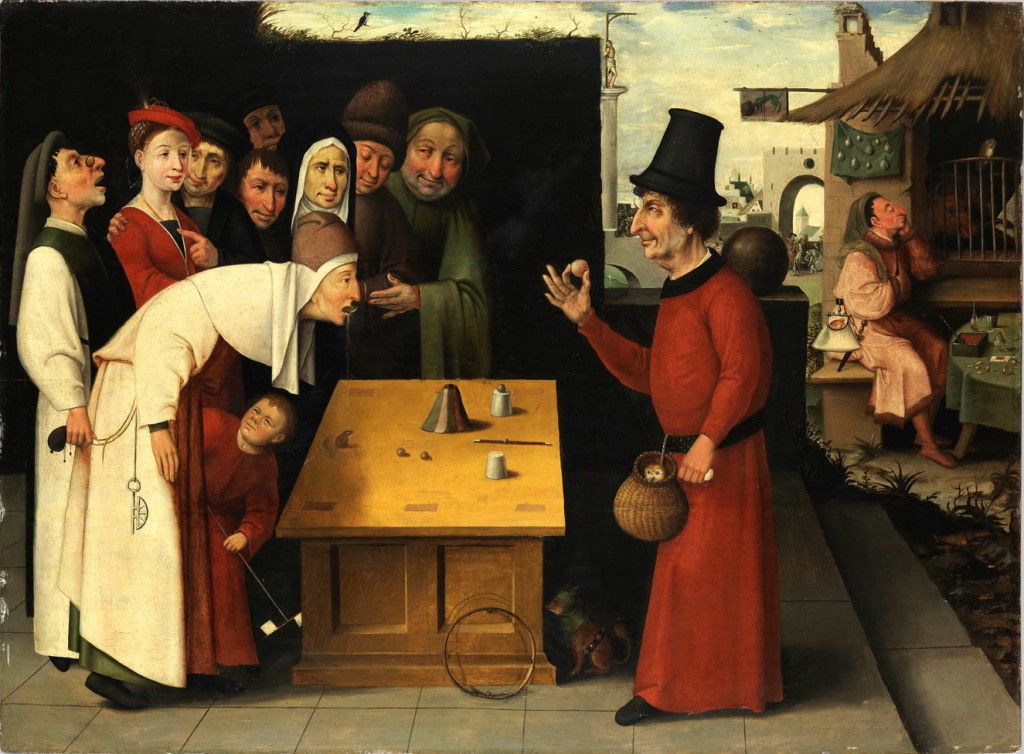
The secret history of street magic
By Adam Tatelman, Arts Editor
The art of street magic may have been popularized by David Blaine, but those who believe he invented it are mistaken. One of the most famous artistic depictions of street magic ever documented is The Conjurer, a Hieronymus Bosch painting from the late 14oos—but street magic itself is believed to have existed even 3,000 years ago as a particularly flamboyant method of busking, with roots in Eastern European, Western European, and Asian countries.
While the tricks of today may be more elaborate than those of the past, that’s merely because technology has advanced so much; the basic methods of magic remain much as they were in the past millennia. Tricks are usually separated into different categories depending on their execution. These include card magic, which uses sleight of hand techniques perfected by card sharps throughout history; illusionism, in which ordinary objects appear to do extraordinary things; and mentalism, in which the magician appears to have powerful mind-reading or clairvoyant abilities.
Depending on the setting, these tricks may be adjusted for maximum effect in either close-up or big-scale stage presentations. What we know as street magic today is typically characterized by cold approaches with no prep time. This actually enhances the illusion by placing all the focus on the magician, rather than his venue. Levitation tricks are particularly popular with street magicians, since accomplishing such with no assistants or props of any kind is sure to stun the audience.
Most magicians operate by Thurston’s rules, so named for the magician who supposedly coined them. First, never reveal the trick’s methods to anyone, unless you specifically choose to train them in the art—otherwise, you’ll cheapen the trick for anyone who might use it in the future. Secondly, don’t present a trick until you are sure you’ve perfected it. Finally, don’t perform the same trick for the same audience twice. If you do, they’re going to focus more on trying to figure out your routine. This also keeps magicians in search of fresh material.
Despite the literary archetype of the mischievous magician, the magician’s community generally frowns upon the malicious use of magic tricks—that is, conning or humiliating people with magic. According to the members of the UBC Magicians & Illusionists Association, the purpose of magic is not to deceive people, but to give them a sense of wonder and hope. Essentially, to help people believe in the impossible, even for a moment.
So, how does one get started in the practice of magic? Really, you just have to decide to. It isn’t difficult to learn tricks from those who know the score, provided you promise to keep their secrets. The more you learn, the easier it will be to invent tricks of your own. That’s where the fun really begins. People will try to sell you all kinds of magic kits and fancy presentational gear, but none of it is actually necessary to those who just want to wow an audience. In this way, street performers reveal the greatest secret of magic: Anyone can do it.


